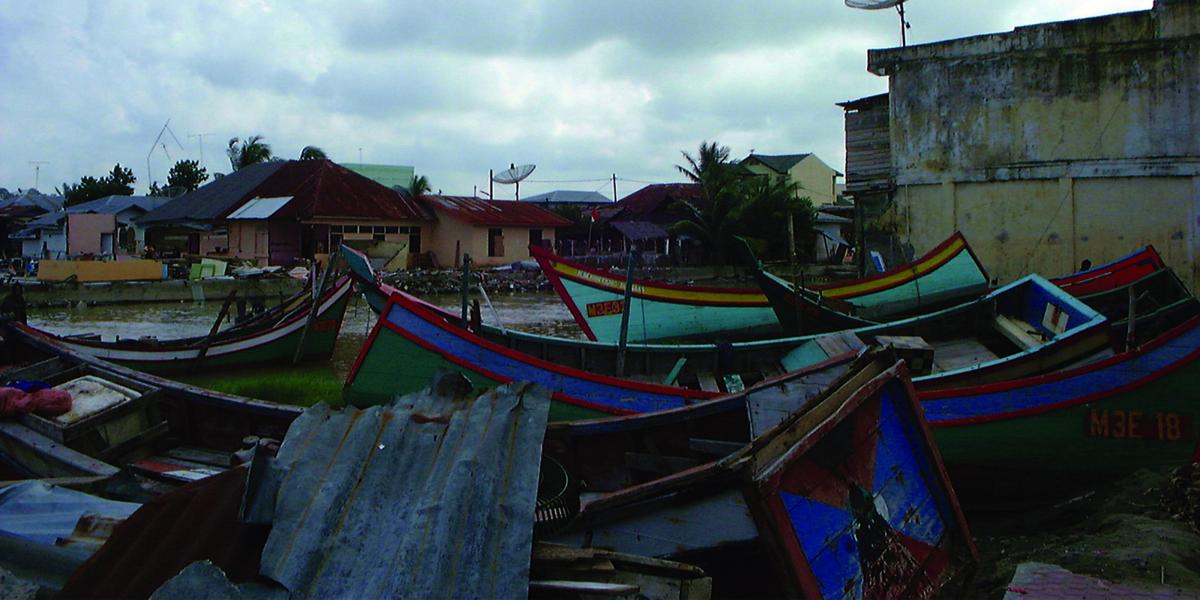Rebuilding Tsunami-Shattered Lives
The Indian Ocean tsunami that killed more than 200,000 people on December 26 swept away entire communities, leaving no one behind to identify or even bury the dead. In the hard-hit Indonesian province of Aceh, in northern Sumatra, the devastation was so great that many with the means to flee are doing so. One of the challenges facing relief workers in the coming months is not just feeding the survivors, but helping to rebuild the civic and social structures that are the essential components of a healthy society.
“Many people of means have fled to Jakarta or other regions, largely because it appears that there is nothing left to stay for,” says Earl Wall, a research associate at the Bloomberg School’s Center for Refugee and Disaster Response. Already one of the poorest Indonesian provinces, Aceh has suffered from a three-decade armed rebellion by the Free Aceh Movement, intent upon winning independence from Jakarta’s rule. “There was a sense that this was the last straw,” says Wall.
Within 48 hours of the disaster, Wall was on a plane to Jakarta to meet with Indonesian colleagues and graduates of the Hospital Preparedness for Emergencies (HOPE) project, a program of the Center for Refugee and Disaster Response that trains hospital administrators in the fundamentals of humanitarian crisis management. Together the group went on to the provincial capital of Banda Aceh, where more than 50,000 people were killed in the city by a series of three waves that came crashing through its low-lying neighborhoods. When Wall arrived, entire sections of Banda Aceh were nothing but fields of debris littered with human bodies.
“Disposing of them becomes a huge problem,” says Wall. “It is not a problem of disease. This is one of the biggest misconceptions in these situations.” As the Center for Refugee and Disaster Response teaches, dead bodies rarely cause illness and death.
The challenge of a corpse-strewn landscape is more psychological than physiological, says Wall. “The real problem is it’s just terribly inhuman to see people everywhere who have died suddenly and violently. The process of removing the debris and recovering the last of the bodies is probably going to take months.”
It will take even longer to rebuild some sense of normalcy. Wall and his colleagues worked in several area hospitals where, he reports, an estimated 70 percent of the local physicians were either killed or have left. The tsunami inundated the ground floor of the Dr. Zinol Abdeed Hospital, which is the province’s regional medical center and training hospital. The building needs to be cleaned up and resupplied, says Wall. “Its programs need to re-established. This is one of the areas in which I am hoping we at Johns Hopkins can be of some assistance.”
Since returning to the U.S. on January 12, Wall has been working to help find immediate and long-term relief for Aceh Province. He and his colleagues want to highlight the urgent need for shelter and water purification supplies for the tsunami’s survivors. “Right now it is the rainy season and suddenly there are as many as 2 million people without homes,” Wall says. “We know from past experience that this can result in outbreaks of cholera, dysentery, malaria and other diseases, and that they can become epidemic. Also, there is a very real danger of a flu epidemic, and pneumonia is a very great problem.”
